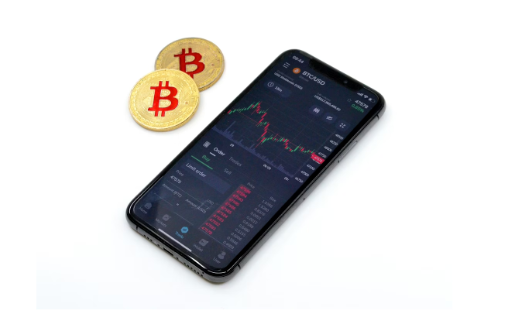Cryptocurrencies are no longer just the focus of traders and headlines about price swings. They’re quietly becoming part of the tools people already use online every day. From paying for a VPN to sending money through a secure messaging app, digital tokens are slipping into spaces once dominated by credit cards and bank transfers. This shift is unfolding step by step, as people discover that crypto fits naturally into the way they already live and work online.

Crypto Moves Beyond Trading
The conversation around cryptocurrencies often centers on speculation, but coins are also becoming part of everyday tools. Maxi Doge Token shows this change in action. Its strong early sales with over $1.9 million raised (source: https://maxidogetoken.com/) and community-friendly tokenomics have helped it stand out from the crowd of coins.
Other digital assets, like Bitcoin and Ethereum, remain the most recognized, while stablecoins such as USDC are gaining ground for practical use in cross-border payments. Together, they demonstrate that crypto extends beyond investment to encompass daily functionality. People now use tokens to buy services, donate to causes, or reward content creators online.
Mentions of crypto tokens are no longer limited to traders on forums; they also show up in discussions about payment apps and online communities. This reflects a larger trend.
How Messaging and Crypto Fit Together
Some private messaging apps that once championed privacy are now finding their place among their financial counterparts. Telegram is even experimenting with a crypto wallet within the messaging space, enabling users to send a token in the same way they send a photo. This makes sense. If people trust a platform with their private conversations, it’s no surprise they’d also trust it with their money.
Signal and WhatsApp have both experimented with options that align with this narrative, as it’s common knowledge that money and messaging go together.
The user incentive lies with the convenience of having both tools in the same app as opposed to spending time switching back & forth between a wallet app & a messages app. While the user experience is easy, it represents a significant milestone in fostering a partnership through messaging and the exchange of value.
VPNs, Privacy, & Payments
VPNs that once were tools for the tech-fanatics are now a standard tool for students, remote employees, and families. People can use them to encrypt browsing data, tunnel around location restrictions, and safely navigate online shopping. Some VPN services even accept crypto payments, an option for users who want privacy at every level. If you’re paying for privacy, it makes sense to use a method of payment that avoids leaving a card trail.
This cross-over highlights an essential point: when people start experimenting with crypto for one occasion, they often discover additional uses they hadn’t intended. Paying for a VPN with cryptocurrency provides a foothold for users to start experimenting with tokens for other digital services. What might seem like a small stepping stone can easily turn into a deeply ingrained habit.
Everyday Utility Gains Ground
For years, crypto was treated as a gamble. That view has shifted as tokens find clear use cases. Stablecoins make it easier for freelancers to get paid across borders. Ethereum powers smart contracts behind apps and games. Niche tokens create engaged communities that reward participation in ways traditional loyalty programs never could.
These uses are about solving problems. Families sending money abroad don’t care about speculation, because they care that funds arrive fast and without high fees. Small creators don’t care about trading charts because they simply care that tokens let fans support them directly. Step by step, crypto slips into the background as another tool people use without overthinking it.
Challenges and Skepticism
The road to wider crypto adoption is uneven. Price swings can wipe out value in hours, leaving casual users wary of holding tokens. Projects often appear with big promises, only to vanish months later.
Governments are split on how to handle it: some push forward with digital currency pilots, while others tighten restrictions, worried about money laundering or consumer risks. In the U.S., stablecoins face growing scrutiny, with lawmakers debating how to balance innovation with oversight. Genius Act is one of the attempted solutions so far.
Security adds another layer of doubt. Hacks on exchanges, phishing scams in apps, and fraudulent token launches continue to make headlines. Telegram, for instance, has had to crack down on black market services and crypto scams that thrived on its platform.
For everyday users, these stories create hesitation. Yet history suggests this is not unusual. When online banking first spread, fraud was rampant, and many people swore they would never trust it. Over time, stronger rules, better cybersecurity, and habits built confidence. Crypto may follow that same arc: slow, uneven progress shaped by both setbacks and fixes.
Looking Ahead
The next phase of crypto is unlikely to come from another meme coin or a new blockchain. It will come from tying existing tools together in ways that feel natural. Imagine opening a VPN app that already includes a secure messenger and a crypto wallet, so privacy, conversation, and payment live side by side. Or a chat group where members pool tokens to pay for community projects without going through a bank. Companies are already moving in that direction, so this isn’t something very distant.
PayPal has launched its own stablecoin, aiming to blend digital assets into everyday payments. Stripe now lets businesses accept crypto more easily. As we mentioned, messaging apps like Telegram are pushing crypto wallets with built-in trading, turning chats into mini financial hubs.
Even Visa and Mastercard continue to test card integrations with stablecoins and digital assets. Each step makes crypto feel less like an experiment and more like another option in the toolkit of online life. The line between traditional finance and digital assets is fading, and the shift is not being led only by traders. It’s being shaped by families, small businesses, and communities as they experiment with what works.

Conclusion
Cryptocurrencies are stepping out of the trader zone and into the daily tools we already use online. Whether it is VPNs, chat apps, or payment services, coins now share space with how we browse, talk, and pay. New tokens bring bold energy, while old ones like Bitcoin and Ethereum bring reliability. Stablecoins bring usefulness. The path is uneven, but the tools are slipping into everyday life in ways both subtle and real.